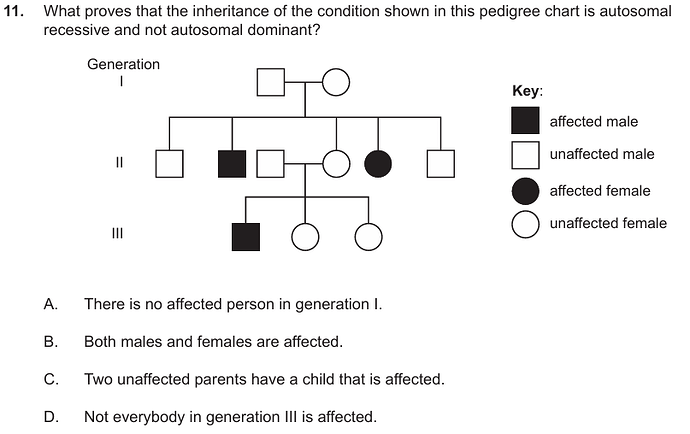Why isn’t the answer A for this one? C is the correct one. Thanks
The reason is because of the following:
You must choose a statement that proves the condition is autosomal recessive. For example, let s say the condition in question is Huntington’s disease, which is autosomal dominant. Denote by “H” the dominant allele, which carries the condition and “h” the recessive allele.
Now statement A is saying that no person is affected in generation 1. This tells us nothing if the disease is dominant or recessive because let s say that we have two parents with alleles hh and hh (in the case of Huntington’s disease). Can we say if it is dominant or recessive ? The parents do not express the condition phenotypically but the condition is actually autosomal dominant in the case of Huntington’s disease. This shows that statement A is not enough to prove that a condition is recessive.
Statement C is correct because to be recessive, two parents who are not affected, can produce a child that is affected. Think of sickle cell anemia. This is an autosomal recessive disease. Two unaffected parents Ss , Ss can produce an affected child ss.
